Made in Italy meat? The real ethnic substitution is between lambs, calves, pigs and chickens

Italian meat is less and less made in Italy. In fact, we are among the main importers of French cattle and Dutch pigs also because in the last 15 years more than half of the companies that deal with sheep farming and breeding have closed. All the details
The only ethnic substitution that Agriculture Minister Francesco Lollobrigida should worry about is the one that could take place with imported lambs, calves, pigs and chickens.
An analysis by the European Court of Auditors (European Court of Auditors, Eca) shows that on Italian tables, especially during the Christmas and Easter holidays, the meat we eat comes from other countries also because many farms and companies in the sector have closed in the last 15 years.
THE TRICKS IN THE TRANSPORT OF LIVE ANIMALS IN THE EU
“Every year, billions of cattle, pigs, sheep, goats, horses and poultry are transported within and outside the EU for breeding, fattening or slaughter: farmers and meat producers seek to exploit and profit regional cost differences. Including Italy.
This was stated by the analysis " The transport of live animals in the EU: challenges and opportunities" carried out by the European Court of Auditors (Eca) in view of the imminent modification of the European legislation on the matter.
In addition to the negative consequences that certain journeys can cause to animals, there is also the risk that transporters choose longer roads to avoid transiting through countries that apply EU rules more rigorously and impose higher penalties.
HOW MANY ANIMALS ARE TRANSPORTED WITHIN THE EU
Between 2017 and 2021, 1.6 billion live animals were transported between EU Member States and to/from non-EU countries. The main purposes are production and slaughter.
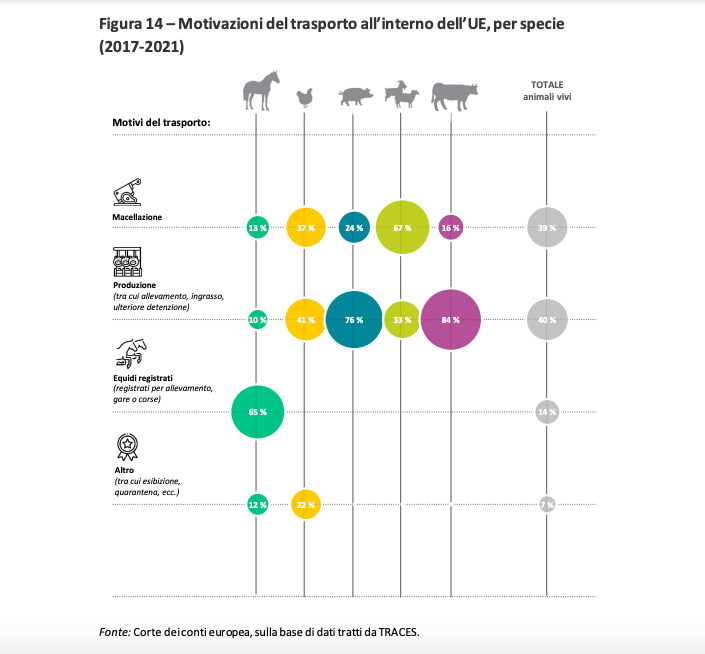
In particular, the cross-border transport of animals (both in terms of number of animals and weight) was divided into: 86% of intra-EU animal movements; 13.5% to non-EU countries and 0.5% were animal imports from non-EU countries.
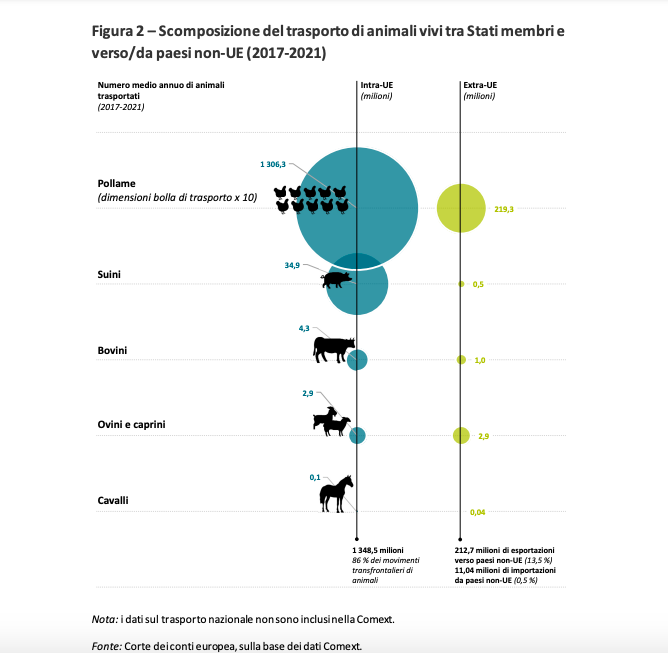
“A single animal – says the analysis – can be transported several times in a lifetime: pigs fattened and slaughtered in Germany are often born in Denmark or the Netherlands, while cattle born in France, Ireland and Lithuania are often fattened and slaughtered in Spain or Italy".
THE NUMBERS OF THE EU AND ITALIAN LIVESTOCK SECTOR
According to the report, the number of companies in the sector has decreased not only in Italy but throughout the Union, to the advantage of larger structures. Between 2005 and 2016, in fact, the total number of farms decreased by 28.6% and that of farms dedicated to breeding by 37.6%.
In our country, between 2005 and 2020, according to Eurostat estimates reported by Eunews , the enterprises dedicated to sheep farming and breeding more than halved, going from 6,830 to 3,360, to which must also be added the decrease in mixed livestock enterprises, mainly grazing cattle, 9,770 to 3,500.
Furthermore, the distribution of livestock across Member States is uneven. Italy, for example, in 2016 was fifth for quantity of poultry within the EU (with only 10% of animals, behind France, Spain, Poland and Germany) and in 2021 seventh for number of pigs (6 %), sixth in the case of cattle (8%) and fifth for sheep (12%).
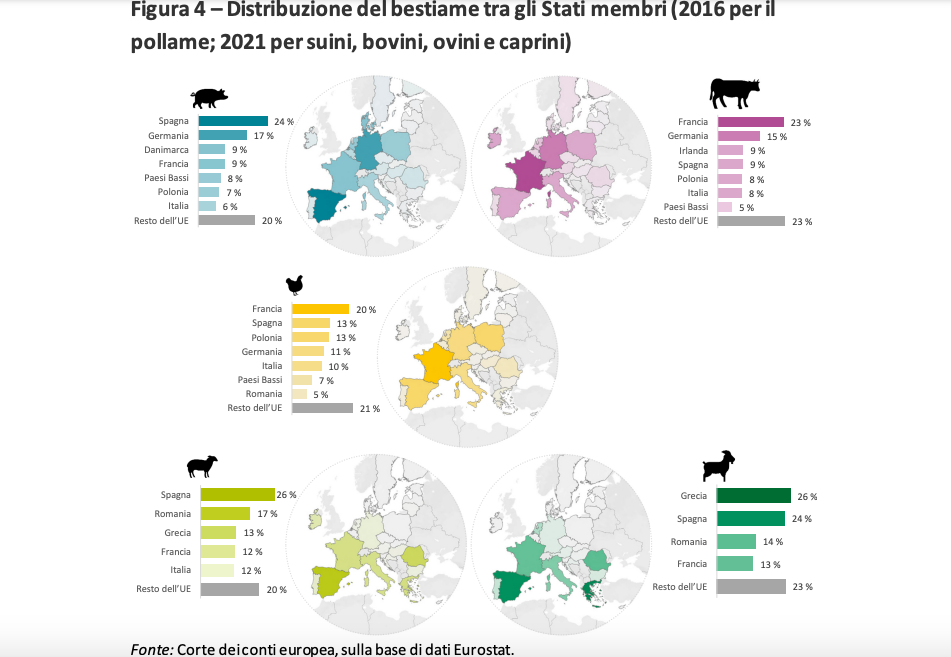
HOW MUCH MEAT DOES ITALY IMPORT
In 2021, EU farmers raised 76 million cattle, 142 million pigs, 60 million sheep, 11 million goats, as well as billions of poultry and other animals, from rabbits to horses.
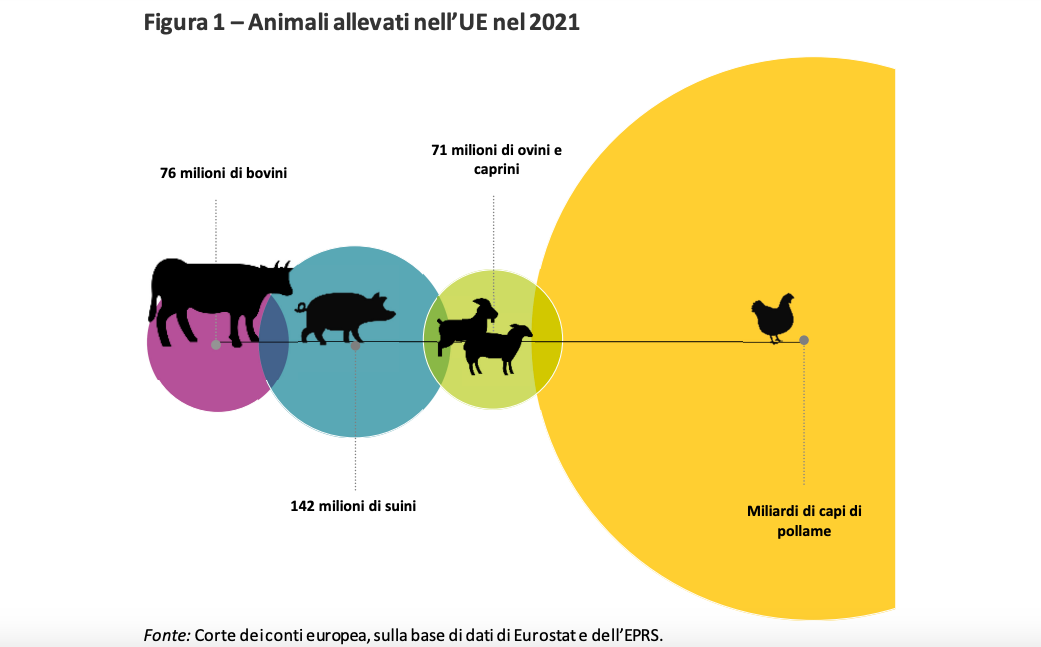
However, observes the ECA, although both Italy and Spain mainly use cattle of national origin, particular market needs require both countries to import calves from other Member States. Our country, for example, imports cattle from April to June to compensate for the insufficient national supply in this period and to ensure the supply of veal when domestic demand is higher, in December-January.
Furthermore, the analysis also shows that most of the cattle sold by France, of which it is the main exporter, arrive in Italy, together with the pigs from the Netherlands.
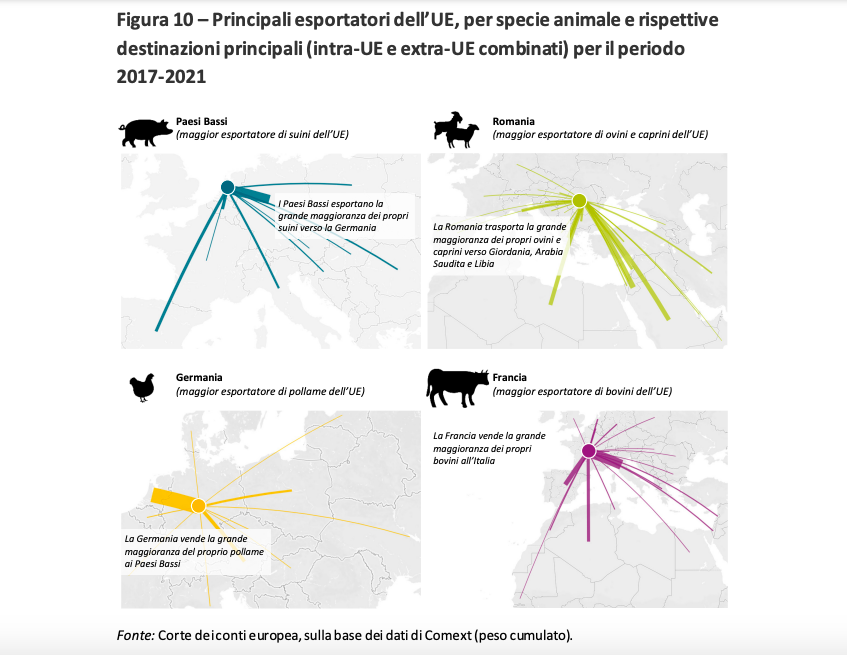
HOW TO IMPROVE
Among the solutions proposed by the ECA to reduce the negative impact of transport on animal welfare – without forgetting the environmental impact – there are both improving travel conditions, reducing the number and length of journeys and bringing slaughtering closer to production site.
Given that, according to a survey cited by the ECA, consumers are willing to pay more for meat, but only if they are aware of good animal welfare, the new legislation could think of attributing a monetary value to animal suffering and incorporating it into transport costs and in the price of meat with the aim of encouraging producers and consumers to adopt sustainable behaviours.
This is a machine translation from Italian language of a post published on Start Magazine at the URL https://www.startmag.it/sanita/carne-made-in-italy-la-vera-sostituzione-etnica-e-tra-agnelli-vitelli-suini-e-polli/ on Wed, 19 Apr 2023 10:35:40 +0000.
